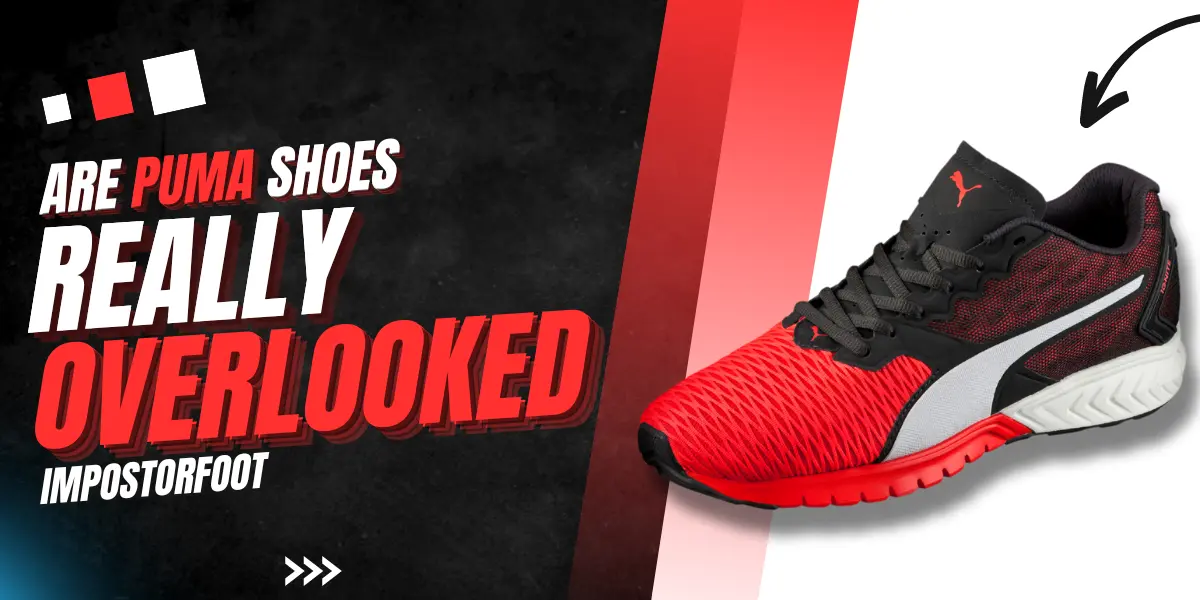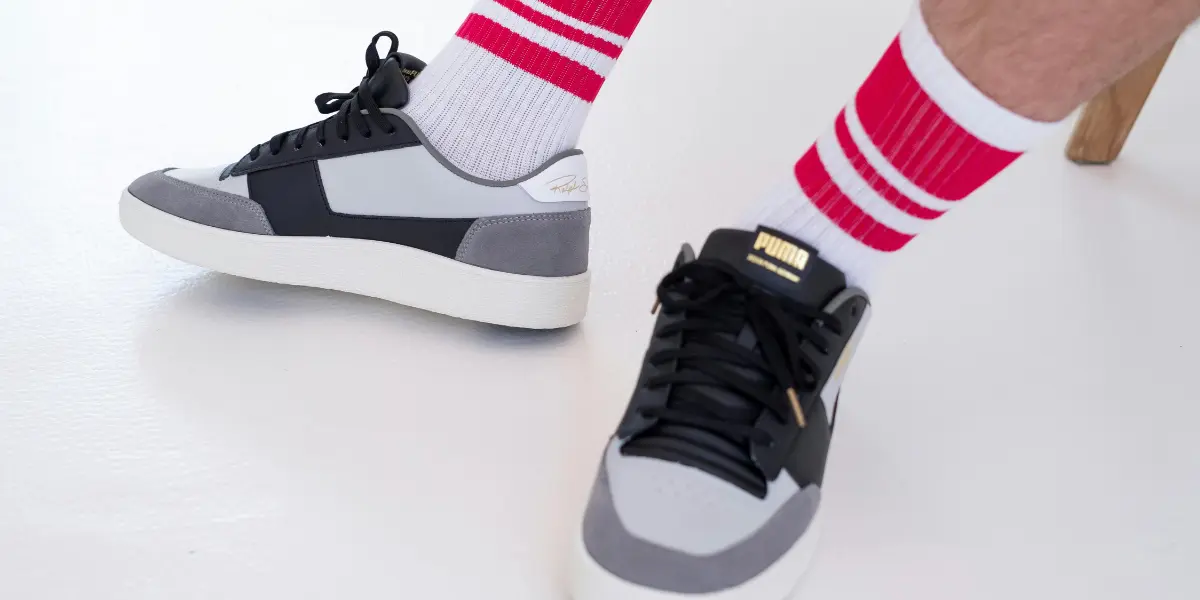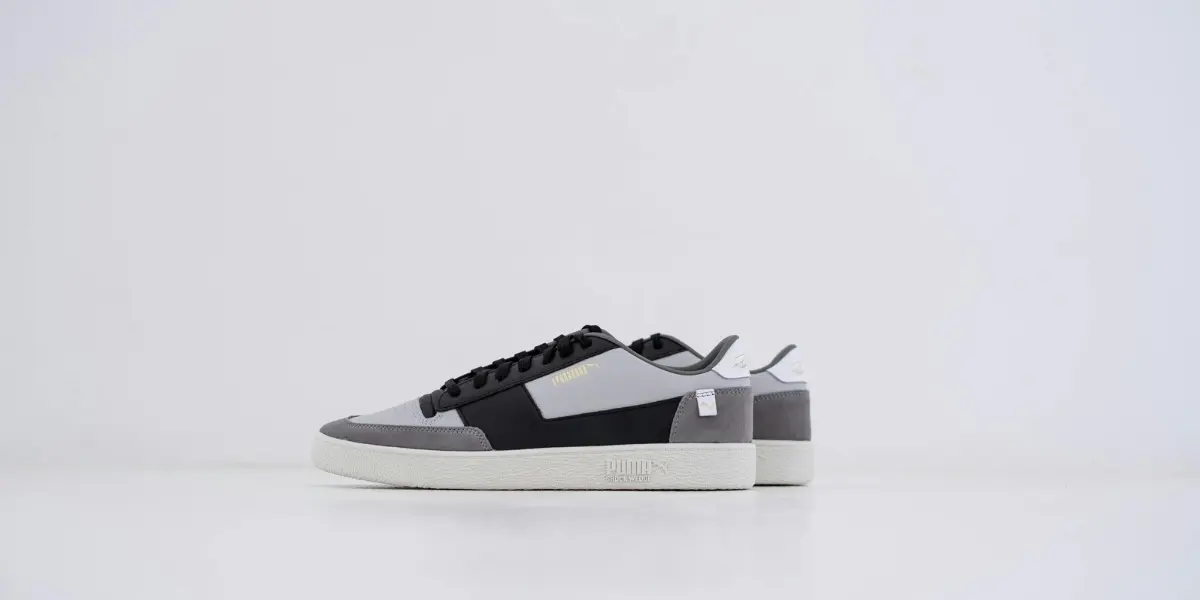
Puma is not underrated; rather, it is overlooked due to the presence of other highly competitive brands.
To date, Puma ranks among the top ten brands of athletic footwear, accessories, and apparel. Its market cap is $6.85 billion, its products are sold in over 80 countries worldwide, and it has a presence in every major market. Puma is also known for its commitment to social responsibility and has donated over $2.5 million to charity.
The brand has a good reputation, but it is still worth knowing how and why other brands overlook it. There are a couple of interesting reasons; let me tell you about them:
Contents
Factors Contributing to Puma’s Lower Status
Let’s check a few factors, shall we?
Intense Competition in the Sportswear Industry
Competing against giants like Nike, Adidas, and Dunkers can be a bit challenging.
Nike and Adidas have historically been the two biggest players in the global sportswear industry. Their market share is terrific. Nike has around 38.23% of total market share, whereas Adidas owns 14.7% of total market share. For those who want to know about Puma’s market share, it’s just 2.6% of the total market share. So, as you can see, the difference is huge.
Not only that, but their strong brand presence and extensive marketing campaigns make it difficult for other brands to compete.
So with such a huge market cap and super fast growth, Puma has to bring something more appealing and new to the market in order to overtake them.
Marketing Budget

Bigger brands usually have more money for marketing compared to their competitors.
This allows them to run larger marketing campaigns, and this is how they get higher visibility.
With extra resources, these brands can afford extensive advertising, sponsor major events, and frequently use celebrity or designer endorsements. These strategies are quite useful for gaining more attention and increasing market sales.
So, because of all these strategies, it’s easy to miss out on other brands, like Puma.
Difference In The Market Target
Top brands set targets for their footwear that appeal to a wider range of people.
For example, if we take Nike, it focuses on customers aged 15–45. This includes men, women, and teenagers, with the goal of establishing long-term relationships. They tailor their products to customers’ personalities, interests, and fashion preferences.
Along with that, Nike positions itself as a luxury brand that appeals to higher-income individuals. The company expands into developing markets globally, emphasizing quality and customer satisfaction.
On the other hand, Puma targets two groups: the primary, aged 15-30, and the secondary, aged 7-35. Puma uses three segmentation tactics: demographics (age, gender, and income), geography (language, beliefs, and location), and psychographics (lifestyle, interests, and behavior) to reach their audience.
This approach of dividing market targets might make things a bit complicated and could result in a lack of clear goals for building relationships with buyers.
Thus, Nike gets more attention than other brands because of its better market targets.
Consumer Preferences and Trends

I was looking on Reddit and Quora and in many places, I saw people commenting about Puma shoes being ugly. They appreciated the fact that Puma shoes are comfortable and good for running but their designs aren’t like they should be.
This provided me with another point in my research, namely that Puma does not adapt to changing trends and lifestyle preferences.
On the other hand, I found Nike and Adidas to always be successful in aligning their products with buyer preferences and staying ahead of emerging trends. They think about buyers and buyers think about them.
Puma must recognize how consumer preferences are evolving and strategically position its products to satisfy these needs. This is another reason why people overlook this brand.
Related Article: Why Are Shoes So Expensive Right Now? Let’s Find Out!
Brand Perceptions

Every brand has its own unique look, feel, and the kind of people it appeals to. This influences how people perceive the brand. For instance, Puma is generally seen as more affordable, while Nike is linked to higher quality and a bit of luxury.
In simple terms, Puma is like a mid-range option that’s budget-friendly, while Nike is considered a bit more upscale. Because Nike has this luxurious image, Puma sometimes gets overlooked as a choice. This lack of recognition as a luxury brand proves to have negative consequences for the company.
Quality Concerns
You know, people might want to ignore a product if they worry about its quality. For example, if customers believe Puma’s products are inferior to those of Nike or Adidas, it can have a negative impact on the entire Puma market. People get this idea from things like the materials used, how long the products last, and how well they’re made.
In reality, this quality concern is true to some extent. Puma sneakers are good, but they cannot compete or last as long as Nike or Adidas. So, due to this, people can overlook Puma whenever they get a chance.
FAQs
Where Are Puma From?
Puma is a big company from Germany that makes sporty shoes, clothes, and accessories for both sports and everyday wear.
It was started in 1948 by Rudolf Dassler, who is the brother of the person who made Adidas. Puma’s main office is in Herzogenaurach, Germany, and it’s one of the top brands for sports gear in the world.
Why Are Puma Shoes Good?
Puma shoes are esteemed for their performance, comfort, and stylish designs. Puma uses innovative technology to make the shoes better for sports, with things like extra padding and stability.
Puma wants their shoes to be comfy, so they design them to fit well and use materials that let your feet breathe. They’re always trying out new ideas and using the latest stuff to make their shoes better.
Overall, Puma’s reliable brand image, combined with a balance of performance and style, contributes to the perceived quality of their footwear.
Are Puma Shoes Popular?
Yes! They are known far and wide for their sportswear. You can easily find them as sponsors at football matches, sports events and much more. They are a popular choice for athletes and ordinary people alike. Puma shoes are comfortable to wear and stylish, which makes them a popular choice for people of all ages.
Despite being preferred by many, Puma footwear is not as well-known as Nike footwear. Puma’s popularity has overtaken Nike’s, which makes people overlook Puma.
Last Words: Should You Buy Puma Shoes?
Yes! You should definitely check out the Puma brand. Their shoes and apparel appeal to both athletes and fashionistas. Not just that, they also have very good craftsmanship, durable materials, and a reputation for quality. They come in lots of different styles and colors, so it’s simple to find the perfect pair.
Yes! Many people overlook them but they are worth money, so you should give them a try if you haven’t.




